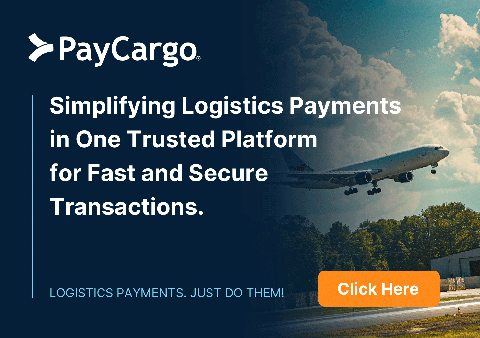
 |
 |
 #INTHEAIREVERYWHERE |
 |
| Vol. 24 No. 48 | Wedesday November 12, 2025 |
 |
So what do you know or suppose might happen ahead after flying around from industry event to industry event for some months now, wondering what’s up and what should we suppose or plan for in air cargo as 2025 moves into 2026 and beyond? |
 Writing for the FlyingTypers is a pretty unique experience. You just need to keep your brain connected and let your imagination run: the pages open up in front of your eyes as though you were in a picture movie. Today our inspiration comes from Rajan Subramanian, Chief Product and Chief AI Officer at Kale Logistics. If you hear his name and you think that he is dealing with AI and all the hottest topics that are on today’s menu in logistics automation, your picture is there: you are directly plunged in the haunting rhythm of the Sorcerer’s Apprentice in Fantasia, the 1940 superb cinematic artwork. I was curious to understand how complicated (or simple in fact) is Rajan’s work, delivering top-tier digital products to a vast audience of logistics enterprises. Writing for the FlyingTypers is a pretty unique experience. You just need to keep your brain connected and let your imagination run: the pages open up in front of your eyes as though you were in a picture movie. Today our inspiration comes from Rajan Subramanian, Chief Product and Chief AI Officer at Kale Logistics. If you hear his name and you think that he is dealing with AI and all the hottest topics that are on today’s menu in logistics automation, your picture is there: you are directly plunged in the haunting rhythm of the Sorcerer’s Apprentice in Fantasia, the 1940 superb cinematic artwork. I was curious to understand how complicated (or simple in fact) is Rajan’s work, delivering top-tier digital products to a vast audience of logistics enterprises. Rajan Subramanian is a strategic and hands-on technology leader with over two decades’ experience driving enterprise-scale transformations through innovative digital platforms, unlocking measurable business value with data drive products. He also has deep expertise in data engineering, machine learning and cloud architecture. With due respect the most interesting idea for me is this one: integrating generative AI to transform complex data into actionable intelligence. Bridging executive strategy with engineering execution, Rajan has helped Fortune 500 organizations across fin-tech, healthcare, communications and supply chain evolve into data-driven, API-first enterprises. A published author of ‘Mastering APIs for Enterprise Applications: Practical Guide to Building Robust, Scalable, and Secure APIs’, Rajan uses the convergence of APIs, cloud infrastructure, and artificial intelligence to shape how organizations innovate in an increasingly digital and interconnected world. In other words, he is no apprentice, he is the sorcerer! So I started my interview with a faint shiver in my spine, asking myself: am I going to know more about this magician’s secrets or is he going to uncover all my inner confidences? I thought I would start with the easy part . . . FT: First things first: how did your journey in technology begin, and what set you on the path toward becoming focused in products and enterprise transformations? RS: My career began as a software developer when we actually wrote code from scratch, without any AI help! As technology evolved, so did my job, and I ventured more into architecture and strategic design of products. During the course of my career, I have come to realize that data is the key to unlocking value within any system. This led to a fascination for how data could drive more intelligent business decisions. I then started working on enterprise systems that connected disparate business units through APIs. This was long before they became mainstream. Over time, I realized that the real opportunity lay in bridging IT architecture with business outcomes, utilizing APIs, data engineering, and, later on, leveraging AI to solve problems that traditional systems couldn’t tackle. Many of the point solutions I helped develop over the years evolved into broader-based products, and I subsequently began focusing on product development. FT: Your book ‘Mastering APIs for Enterprise Applications’ has been well received. Who did you envision as the primary audience for it? RS: My foray into writing this book stemmed from my publisher's observation that, although there are numerous technical books, there was a lack of a book specifically tailored for architects and CTOs, who would benefit most from a decoupled application ecosystem utilizing APIs. This serves as a practical guide with just the right amount of depth without overwhelming the users with too many technical details, for both practitioners and decision-makers. The audience consists of both engineers and architects, who design and build the systems, as well as the leaders who rely on their work. It’s not a coding manual, but a framework for thinking about APIs as business enablers, helping organizations build scalable, secure, and interoperable systems that can evolve in an AI-first world.
FT: You’ve led technology transformations across global organizations. What motivated your move into sectors like logistics and supply chain, which are now experiencing rapid digital disruption? RS: I have experience in various industries, so I can bring insights with an outside-in perspective; for example, my experience in fin-tech affords serving accurate data in real-time, and my experience in medical software helps me think around precise and high-quality data. The logistics industry is complex per se, as the number of stakeholders is big, and the complexity is increased by dealing with diverse countries, regulations, and compliance requirements. Turning complexity into opportunity is driving my experience and logistics and supply chain are fascinating for me, because they connect every part of the global economy, yet they’ve historically lagged in digital innovation. What attracts me is the potential to apply AI, data platforms, and cloud-driven intelligence to make these systems more adaptive, transparent and scalable. FT: Do you see logistics players becoming more proactive in innovation, or are external market forces still driving change? RS: The mindset is shifting. The advent of AI, with companies like OpenAI and Google providing software companies easy and cheap access to AI engines, enables rapid innovation in this industry. As a result, there is a surge of startups and established players creating innovative products. Shippers and logistics providers are increasingly recognizing that innovation isn’t optional and is essential for survival. Yet, much of the momentum still comes from external pressures, whether from e-commerce dynamics, customer expectations, or government mandates. The winners will be those who turn compliance and efficiency requirements into strategic differentiators through intelligent technology. FT: How do you view the role of AI in enhancing sustainability and risk management in global trade? RS: Risk management presents a significant opportunity for AI: the ability of AI agents to continuously monitor and react in real-time to various parameters will not only help identify risks rapidly but also mitigate them quickly. AI is already becoming transformative. The ability of AI agents to autonomously analyze supplier networks, monitor ESG indicators, interface with hardware, and optimize route and mode choices for both environmental and cost performance will be critical. The key is trustworthy AI systems that are transparent, auditable, and aligned with both regulatory and ethical frameworks.
FT: As Chief AI Officer at Kale Logistics, your work aligns with automation and optimization. Will your focus remain operational, or do you envision expanding Kale’s technology horizons even further?
FT: Yes, knowledge is power, but how do you view the recent debates over de minimis thresholds and their potential impact on e-commerce? Disruptive? |
|
|
Every once in a while, the right people find themselves in the right place at the right time and all of us can just marvel as the story unfolds, and as an industry we are eye witnesses to continuing and elevating possibilities. |
 |
If
You Missed Any Of The Previous 3 Issues Of FlyingTypers Access complete issue by clicking on issue icon or Access specific articles by clicking on article title |
||
 Vol. 24 No. 45 Last Mile & Trucker Bankruptcies Chuckles for October 31 Kale Exceeds Need For Speed Great Lady At ATC India Focus On Unified Logistics System |
 Vol. 24 No. 46 Vol. 24 No. 46Jan Krems Still Loves Sexy Cargo In Dutch With The Dutchess Chuckles for November 4 More On More On TIACA |
|
Publisher-Geoffrey Arend • Managing
Editor-Flossie Arend • Editor Emeritus-Richard Malkin |
Send comments and news to geoffrey@aircargonews.co
|